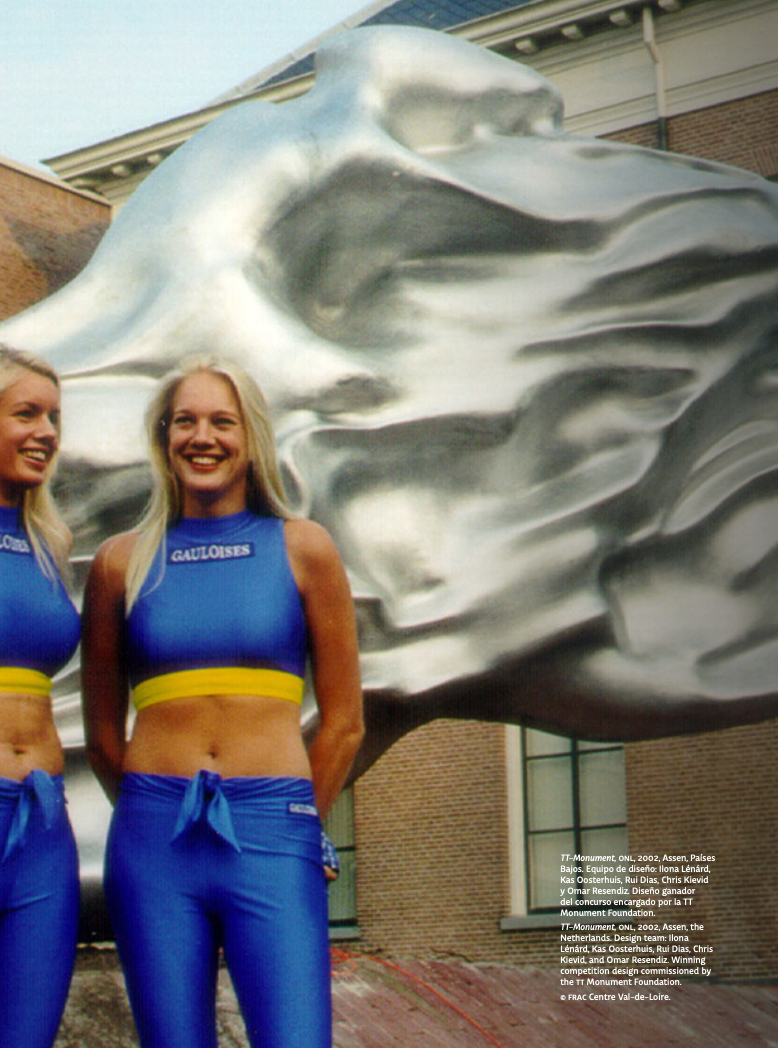Arquitectura como interfaz: interactividad e inmersión en los pabellones digitales de ONL y NOX
Barra lateral del artículo

Palabras clave:
Contenido principal del artículo
Resumen
Los pabellones hermanos diseñados por Kas Oosterhuis y Lars Spuybroek –construidos en Neeltje Jans, Países Bajos, entre 1994 y 1997– fueron emblemáticos de un conjunto de condiciones que permitieron concebir una arquitectura interactiva entre el primer y el segundo giro digital. Caracterizados por una atmósfera lúdica y definidos por ofrecer una experiencia inmersiva, los pabellones actuaron como condensadores de cualidades espaciales que marcaron una época cultural y un modo expresivo de practicar la arquitectura. Este enfoque consideraba la interactividad, el involucramiento emocional y el movimiento físico del observador como elementos clave de una arquitectura verdaderamente contemporánea capaz de responder a las nuevas necesidades de la sociedad.
Detalles del artículo

Esta obra está bajo una licencia internacional Creative Commons Atribución-NoComercial 4.0.
Materia Arquitectura proporciona acceso inmediato y gratuito a todos los contenidos de esta edición electrónica, publicada simultáneamente con la edición impresa. Materia Arquitectura no cobra honorarios a los autores por ningún concepto.
Todos los contenidos de esta edición electrónica se distribuyen bajo licencia Creative Commons de “Atribución-Copartirigual 4.0 Internacional” (CC-BY-SA).
La licencia Creative Commons permite el acceso libre e inmediato al contenido y permite que cualquier usuario lea, descargue, copie, distribuya, imprima, busque o genere enlaces a los textos completos de los artículos, permitiendo también que estos puedan ser rastreados para indexarlos, pasarlos como datos a software o usarlos para cualquier otro propósito legal. Asimismo, la licencia otorga derechos de uso a quienes a su vez utilicen una licencia abierta (Creative Commons o equivalente).
Los derechos de los textos y las imágenes publicadas pertenecen a sus autores, quienes otorgan a Materia Arquitectura la licencia para su uso. La gestión de los permisos y la autorización de publicación de las imágenes (o de cualquier material) que contenga derechos de autor y sus consecuentes derechos de reproducción en esta publicación es de exclusiva responsabilidad de los autores de los artículos.
Toda vez que mencionen su origen, los autores son libres de distribuir sus artículos por otros medios. Cualquier reproducción total o parcial del material deberá citar su procedencia.
Descargas
Citas
Amabile, L. (2021). Shifting Identities. Notes on the Digital Turn. Compasses, 42, 19–28.
Bentley, I., Alcock, A., Murrain, P., McGlynn, S., & Smith, G. (1985). Responsive Environments: A Manual for Designers. The Architectural Press.
Carpo, M. (Ed.). (2013). The Digital Turn in Architecture 1992—2012. Wiley.
Carpo, M. (2017). The Second Digital Turn: Design Beyond Intelligence. MIT Press.
Carpo, M. (2023a). Beyond Digital: Design and Automation at the End of Modernity. MIT Press.
Carpo, M. (2023b, March 23). A Short but Believable History of the Digital Turn in Architecture. E-Flux Architecture: https://www.e-flux.com/architecture/chronograms/528659/a-short-but-believable-history-of-the-digital-turn-in-architecture
Deleuze, G. (1988). Le Pli. Leibniz et le baroque. Les editions de Minuit.
Fankhänel, T., & Lepik, A. (Eds.). (2020). The Architecture Machine: The Role of Computers in Architecture. Birkhäuser.
Jormakka, K. (2002). Flying Dutchmen: Motion in Architecture. Birkhäuser.
Kallehauge, M., & Jørgensen, L. R. (Eds.). (2024). Architecture Connecting: Living Structures. Lars Müller.
Lynn, G. (1996). Blobs (or Why Tectonics Is Square and Typology Is Groovy). ANY, 14, 58–62.
Lynn, G. (Ed.). (2013). Archaeology of the Digital. Sternberg Press.
Maldonado, T. (1992). Reale e virtuale. Feltrinelli.
Migayrou, F. (2004). Architecture Non Standard. Centre Georges Pompidou.
Mori, M. (1970). The Uncanny Valley. Energy, 7(4), 33–35.
Novak, M. (1993). Liquid Architecture. In M. Benedikt (Ed.), Cyberspace: First Steps (pp. 224–254). MIT Press.
Oosterhuis, K. (2002). Architecture Goes Wild. 010 Publishers.
Oosterhuis, K. (2003). Hyperbodies: Toward an E-motive Architecture. Birkhäuser.
Oosterhuis, K. (2007). Introduction/Editorial. In K. Oosterhuis, X. Xia, & E. Jap Sam (Eds.), Interactive Architecture. Episode.
Pask, G. (1969). The Colloquy of Mobiles. In J. Reichardt (Ed.), Cybernetic Serendipity: The Computer and the Arts (p. 34). Studio International.
Perella, S. (1997). Hypersurface Architecture and the Question of Interface [Collection]. V2_ Lab for the Unstable Media. https://v2.nl/articles/hypersurface-architecture-and-the-question-of-interface
Picon, A. (2010). Digital Culture in Architecture: An Introduction for the Design Professions. Birkhäuser.
Schwartz, I. (1997, September 7). Proeftuin voor interactiviteit. De Water-paviljoens van Lars Spuybroek en Kas Oosterhuis. Archis.
Shanahan, M. (2018). The Technological Singularity. MIT Press.
Spuybroek, L. (2008). The Architecture of Continuity: Essays and Conversations. NAi Publishers.
Steenson, M. W. (2020). Augmentation and Interface: Tracing a Spectrum. In T. Vardouli & O. Touloumi (Eds.), Computer Architectures: Constructing the Common Ground (pp. 79–93). Routledge.
Thompson, D. W. (1917). On Growth and Form. Cambridge University Press.
Vardouli, T., & Touloumi, O. (Eds.). (2020). Computer Architectures: Constructing the Common Ground. Routledge.
Vidler, A. (1992). The Architectural Uncanny: Essays in the Modern Unhomely. MIT Press.